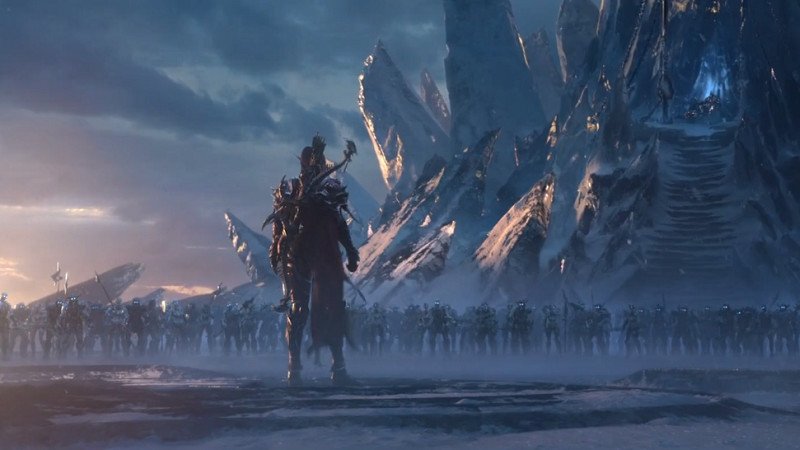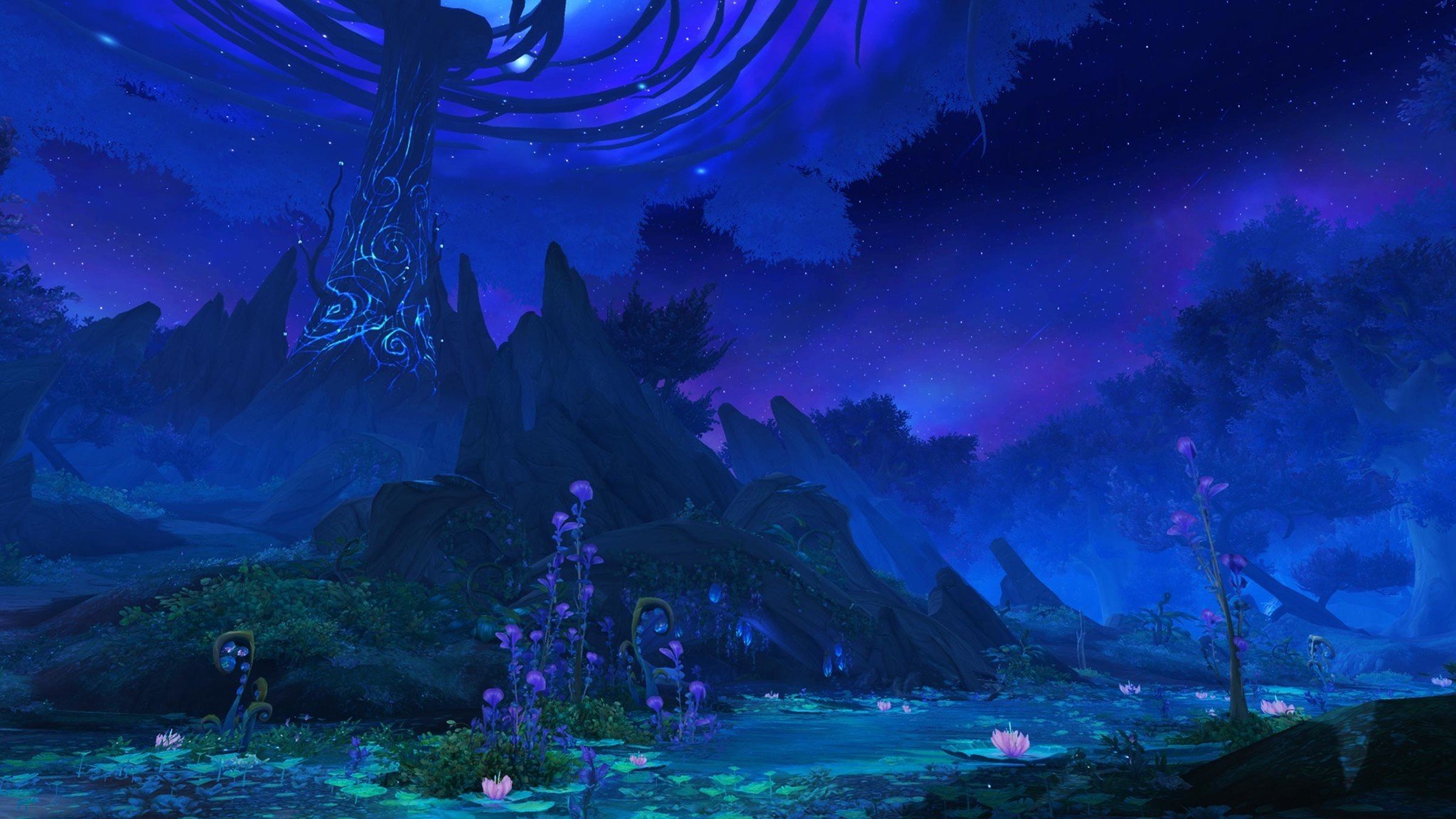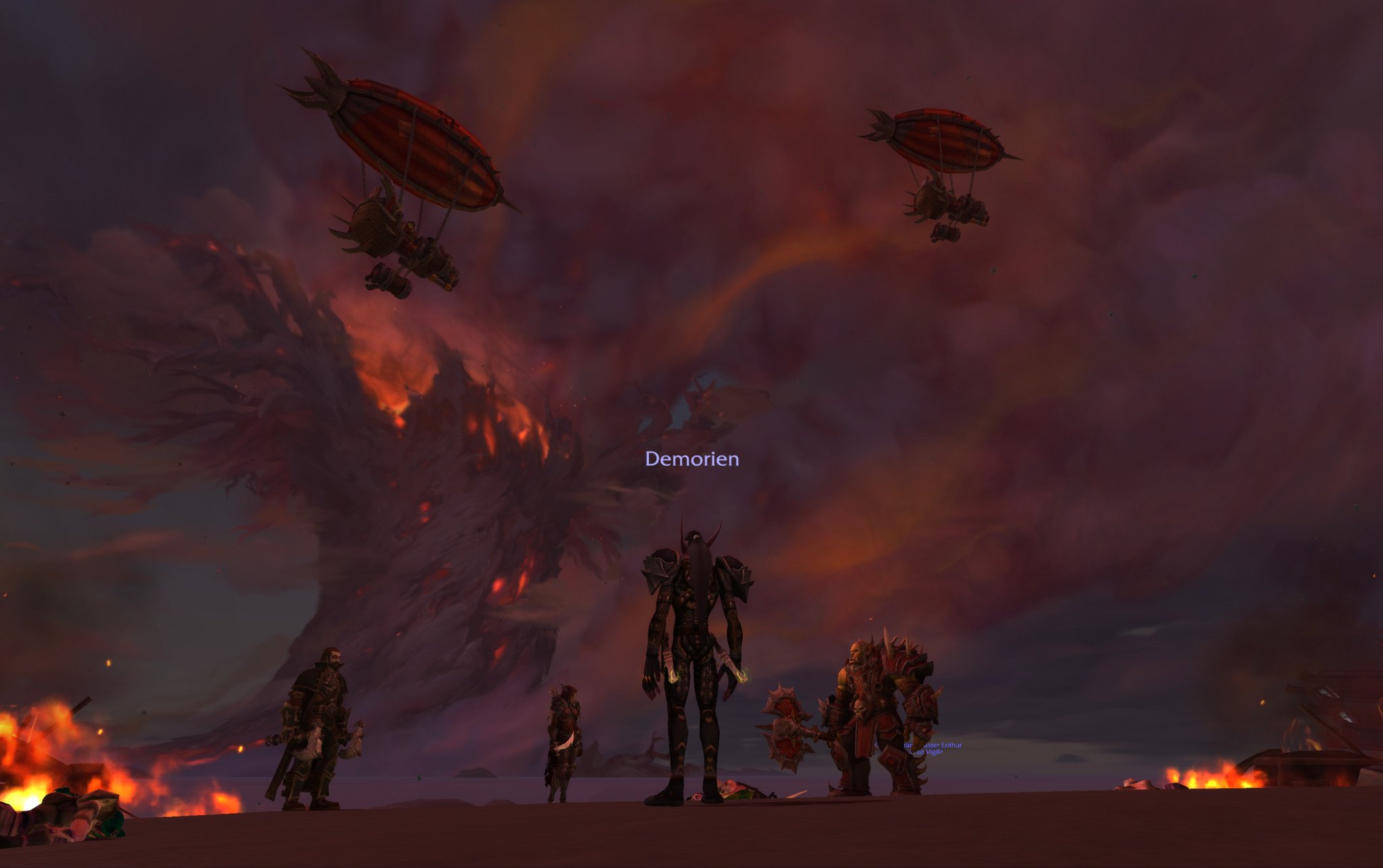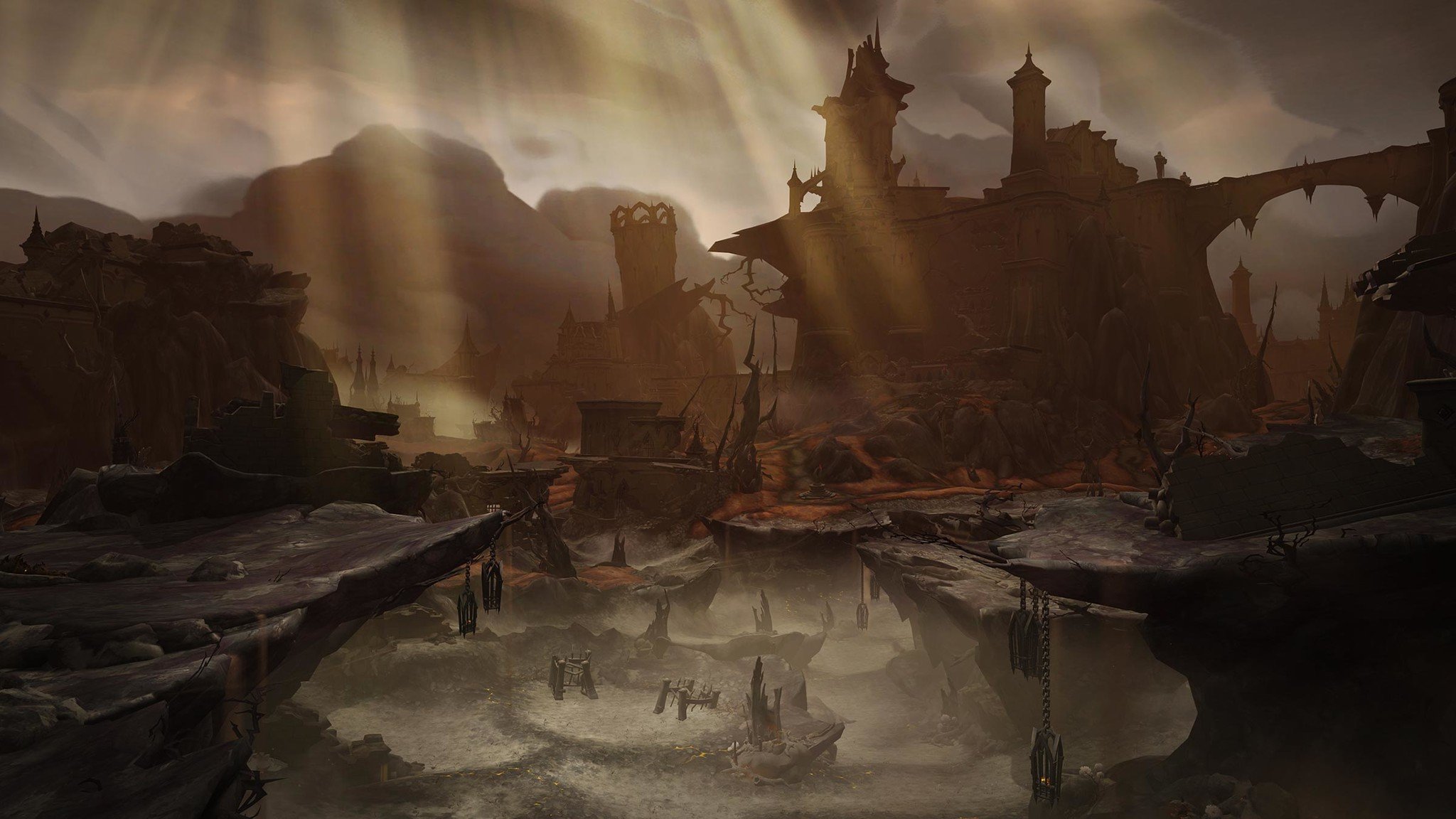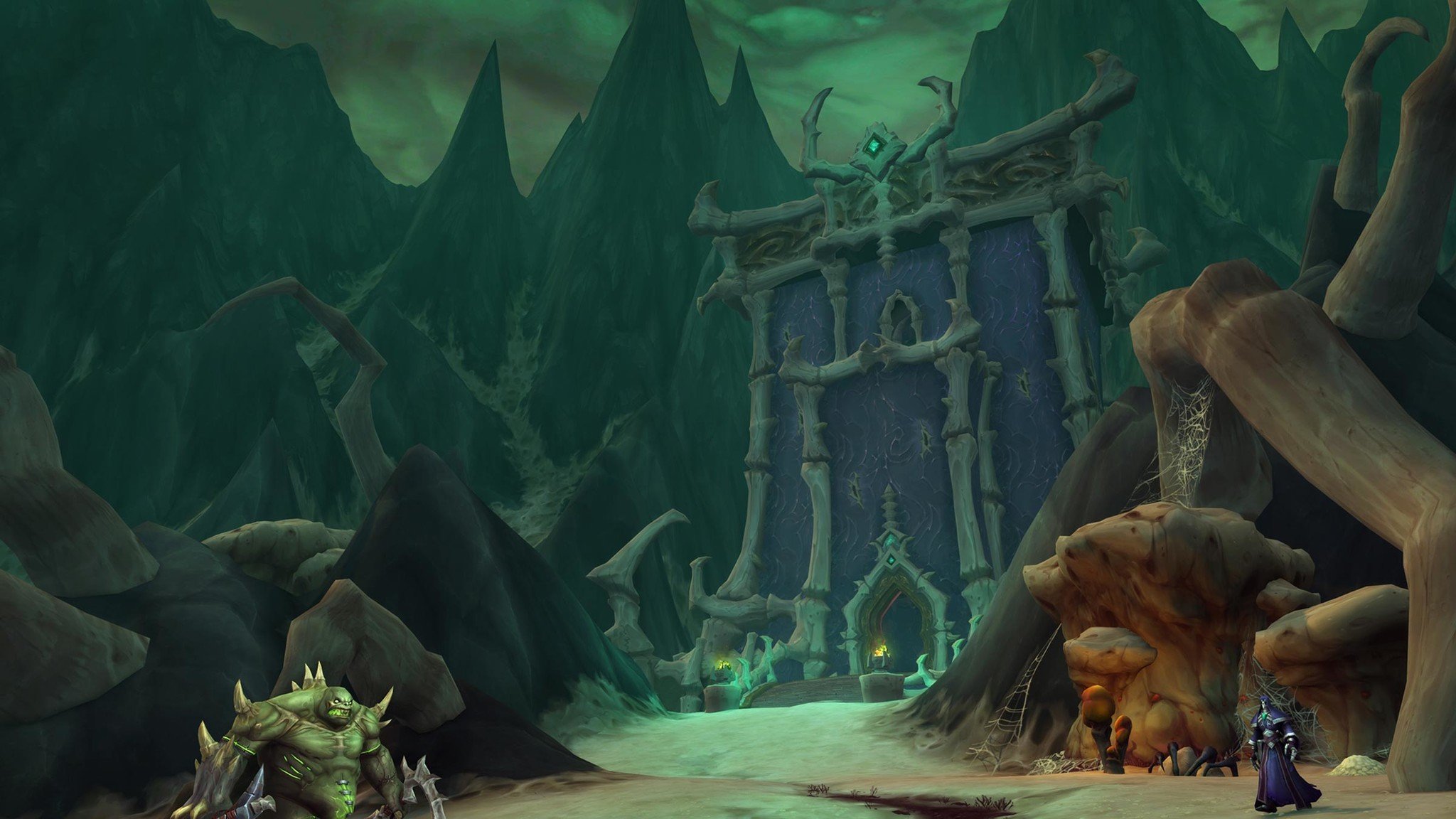World of Warcraft interview: Looking back at Battle for Azeroth, and looking ahead to Shadowlands
Recently, we caught up with Steve Danuser, Lead Narrative Designer for World of Warcraft to learn about the past, present, and future of the world's most successful MMO.
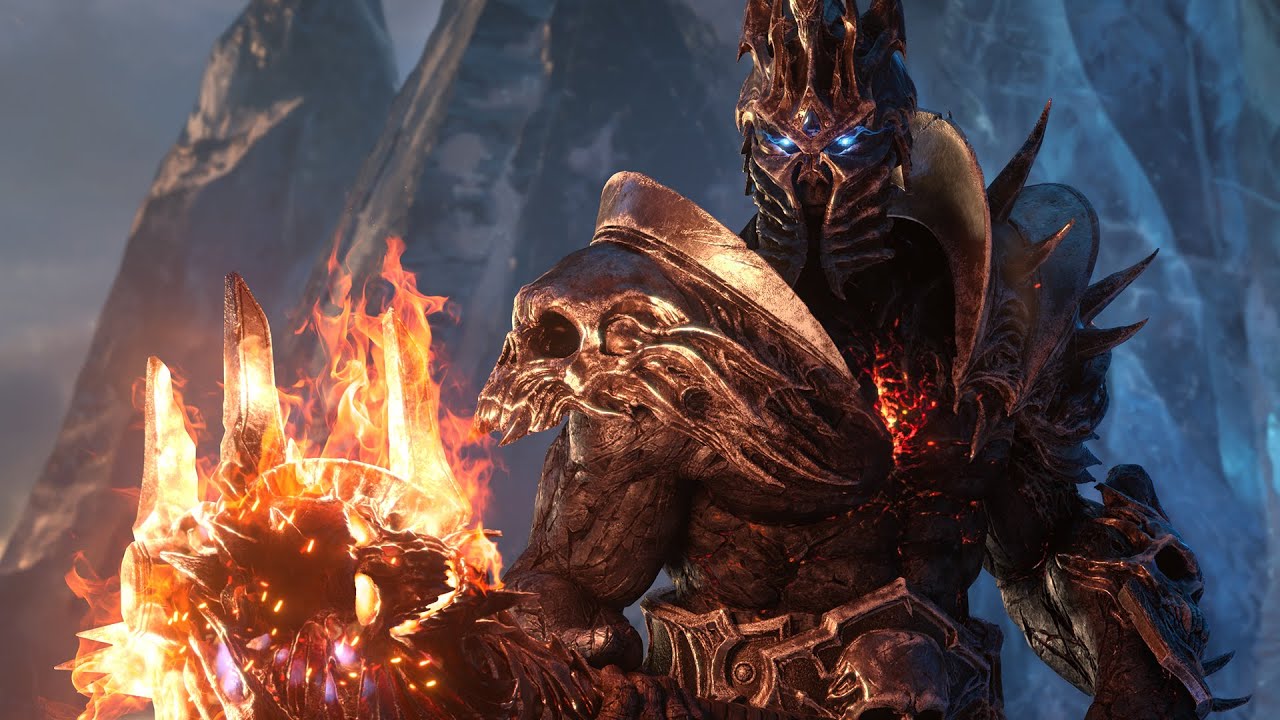
World of Warcraft is a living, breathing game with frequent large updates that not only add new activities and dungeons, but in recent times, tons of new story beats. The recent expansion "Battle for Azeroth" features a war campaign story chain, which furthered the plot of the game alongside the regular raids, PvP content, and dungeon diving the game is generally known for.
Battle for Azeroth saw some pivotal moments for fans of the game, with the ancient Night Elf homelands burned to a crisp, following a war of aggression instigated by the Horde warchief Sylvanas. Blizzard told this story through numerous in-game events, as well as some truly incredible CGI videos that released in a staggered manner throughout the expansion.
We caught up with Steve Danuser, Lead Narrative Designer for World of Warcraft to learn all about how building Warcraft's narrative structure works, learning about Blizzard's philosophy in story delivery, alongside what the future holds for the next expansion, World of Warcraft: Shadowlands.
Building a living story
Jez Corden, Windows Central: As World of Warcraft grows, is it becoming more difficult for Blizzard to keep tabs on all the different plot threads and character arcs?
Steve Danuser, Lead Narrative Designer for World of Warcraft: Storytelling at Blizzard is a team effort. We have narrative designers, quest designers, cinematics directors and artists, our story and franchise development team, historians, and a host of other people who all contribute to our ongoing narrative and making sure we maintain consistency and continuity in our characters and story threads.
The challenge comes in pacing out that content in a way that makes sense for the game. Our goal is to tell a focused, entertaining story that our audience can follow and interact with. If we pull in too many characters at any one time, it runs the risk of making our narrative disjointed and hard for players to keep track of. We try to think in terms of which are the major characters and plot points of a given content update, which are the minor ones, and which we are better off saving for a later opportunity.
There is also an element of pacing. Some plotlines are self-contained, with a beginning, middle, and end contained within a single release. But we also have a lot of major plotlines that intertwine and tell deeper stories, and sometimes one thread can't fully resolve until a related one is dealt with.
All the latest news, reviews, and guides for Windows and Xbox diehards.
Fans of a particular character or storyline sometimes get anxious if they don't see an immediate resolution to a plot thread. As fans ourselves, we completely understand the desire to see a resolution for something we care about. But the fact is, sometimes it's better for the game and its pacing to let these things unfold naturally rather than wrap them up prematurely.
Sometimes I wonder if there's a conflict between gameplay systems and story delivery. In the Warfronts, we saw Forsaken night elves very aggressively join the Horde under Sylvanas, filled with vengeance, only to abruptly leave with Calia Menethil in Patch 8.3, after Sylvanas revealed her betrayal of the Horde. I realize that gameplay might have to come first, but is it ever frustrating trying to marry gameplay features like Warfronts with logical in-game story beats?
Correction: This question previously stated that the Forsaken night elves left to rejoin the Alliance, that was something added later in the write-up to try and give more context to the question for those who might not have experienced the storyline. I had assumed that the night elves leaving with Calia meant they were going back to the Alliance, but that was merely an assumption on my part, and not included in the question presented to Steve Danuser. I have removed that assumption, and apologize for the error.
As a game, World of Warcraft tells stories very differently than a film or book. For us storytellers, this affords opportunities that aren't present in other types of media, but it also means our stories need to fit in with the game's structure. Features like Warfronts give us an opportunity to see characters react to intense situations and play out over a long period of time, but the needs of gameplay sometimes require us to hold off on resolving those plot points until later in the expansion. We see that as a unique aspect of this medium that we embrace.
The departure of Sylvanas didn't only affect the Forsaken who had been loyal to her for years. Some of the night elves struck down in the War of Thorns felt betrayed and abandoned; these qualities were amplified after being raised into undeath and were capitalized upon by Sylvanas and Nathanos. Now free of the Banshee Queen's command, these undead elves feel lost and hopeless, and so Calia Menethil and Derek Proudmoore have vowed to help them find a future rooted in something beyond than hatred and malice.
I noticed that in 8.3, NPCs in the Horde city Orgrimmar remark and conversate about current events in the story. I thought it was a good way to make the city feel "current." Could we see more of these dynamic story beats delivered in existing cities?
I agree wholeheartedly that sprinkling in that street-level view of the world gives tremendous authenticity to the inhabitants of Azeroth. It can be easy for us, as omniscient players who know the lore and watch videos out of game and read spoiler sites, to forget that the merchant or banker in Stormwind or Orgrimmar only hears about most of our adventures secondhand.
What is their view on the Old Gods and dragons and demons and everything else that has messed with the world? Their perspectives are awesome to see.
The aftermath of the mak'gora in Orgrimmar felt like a time when we really needed to show how major characters were reacting, as well as the commoners in the streets. We intend to keep adding elements like that as the story of Azeroth continues to unfold.
Shaping a virtual war, and the cycle of hatred
For me, the way the story throughout Battle for Azeroth shifts focus between Sylvanas, Azshara, the faction war, and the broader Old Gods plot seemed a little haphazard, was it always planned out this way or was there a change in direction at some point?
The actions of Sylvanas were inexorably intertwined with the war between the Horde and the Alliance. From the epilogue cinematics that introduced Azerite in the last content update of Legion, to her actions in the novel Before the Storm, to the novellas we released on our website and in the Collector's Edition, to the Battle for Undercity that kicked off the expansion, Sylvanas was at the center of it all.
But Azshara and the Old Gods were in the mix from the beginning as well, seeded into Stormsong Valley and the Uldir raid. It was always our plan to delve deeper into those storylines, even though the faction war was the instigator that kicked off the action of Battle for Azeroth.
We often scrutinize our previous work in an effort to improve our storytelling as a team. Looking back, I think we could have done a better job of making sure both factions got a deeper context for where the story was going so that the threads that connected all the elements were clearer. But the major beats of the story were intended from the beginning, and we feel good about how the players got to experience them.
Battle for Azeroth's character arc with Sylvanas feels a tad familiar to how Garrosh Hellscream played out in previous expansions. How do you feel about accusations that Sylvanas is becoming a "Garrosh 2.0?"
One of the major themes in this expansion was expressed by Sylvanas in the opening words of the Battle for Azeroth trailer: "Ours is a cycle of hatred." To demonstrate that there is a cycle, we created a story structure for Sylvanas that, on the surface, echoed many broad strokes of the road Garrosh took. A warchief promoted under questionable circumstances. A brutal act of aggression that instigated conflict. Distrust among the inner circle that led to an uprising. These parallels were intentional. But it's within the nuance that we sought to show the story grow and change.
The Alliance is showing fractures that have not healed cleanly, and that storyline will continue into Shadowlands.
The Horde believed that, by putting the wise Vol'jin in place as warchief, their future was secure. But they hadn't changed the underlying structures or practices that enabled Garrosh's tyranny in the first place. The untimely passing of Vol'jin and a bit of manipulation in the aftermath of his death were all it took for the pattern to begin repeating.
Similarly, the Alliance found itself with a new leader after King Varian's fall on the Broken Shore, but Anduin was so focused on living up to his father's legacy that it blinded him to certain truths. Those blind spots proved costly and will be something he has to come to terms with going forward.
Once the plot was put into motion, the differences in the stories of Garrosh and Sylvanas began taking shape. The theme of change was brought home by Saurfang's words in the cinematic that preceded the mak'gora: "Breaking the cycle." Horde players were given the opportunity to see both sides of the conflict and decide which they wanted to follow. This time, the army that gathered at the gates of Orgrimmar didn't raid the city; they caught a glimpse of what Sylvanas had been working toward the whole time.
The structure of the Horde's leadership was fundamentally changed, and they now have a real chance to prevent history from repeating once more—though they still have their share of challenges ahead. The Alliance is showing fractures that have not healed cleanly, and that storyline will continue into Shadowlands.
The aftermath of a war is always messy. Expect repercussions from the Fourth War to carry forward for a long, long time.
The Alliance seems overly accepting and forgiving of the fact the Horde burned down Teldrassil and genocided the Elves, in my view. I feel a bit like that is glossed over, perhaps?
In the epilogue scenes in Visions of N'Zoth, we wanted to show that Tyrande clearly has not forgotten what happened and will not accept any treaty that doesn't see Sylvanas—and the Horde—answer for the crimes of burning the World Tree and the murder of innocents.
Wars have a way of changing the world and those who inhabit it, in ways both broad and subtle. These changes do not resolve cleanly in a short span of time; that wouldn't feel genuine or true to the deep wounds inflicted by the Fourth War. So, while many fans are eager to see the resolution of what happened at Teldrassil, there is a lot more story that needs to unfold before it can be fully addressed. These characters have a long way to go, and many more lessons to learn.
Becoming the Maw Walker
The cinematics throughout Battle for Azeroth and into Shadowlands are absolutely incredible, with Saurfang and Zekhan. Will we see more of this in Shadowlands, or was that something planned just for Battle for Azeroth?
Our amazing artists who create the fully rendered cinematics do such awesome work, and we're always thrilled with how our expansion trailers resonate with players. Seeing them debut at BlizzCon is one of the greatest joys of my job. I get to stand in the crowd, listening to the cheers and gasps with tears of happiness in my eyes!
Early in the development of Battle for Azeroth, we recognized an opportunity to create a series of cinematics that could allow the Saurfang storyline to unfold in a way we'd never done before. We had a great story we wanted to tell, and the prerendered cinematics team was excited for the opportunity to bring it to life.
In the future, it would be great if the opportunity arose to tell another tale in a similar fashion, but we want to make sure we're choosing the right stories and the right moments.
Expect repercussions from the Fourth War to carry forward for a long, long time.
I'm not sure I always like how the player character is referred to as the "Champion" and is known throughout the land as some kind of superhero. The game felt a little bit more grounded in vanilla, where you're just a soldier of the Horde. How do you feel about how the player character is presented?
If a character has existed for any length of time in WoW, they've probably had a hand in toppling some of the big bads of the Warcraft universe. Over the years, the player character's role has evolved in the world significantly. With Warlords of Draenor, it made sense given the nature of the expansion for the player to be referred to as "commander" of their garrison. With Legion, the character became leader of a class order, so was often referred to by a special title. And in Battle for Azeroth, "champion" was used to refer to the player's status as a hero of their faction.
Still, it is nice to sometimes feel like one part of something bigger. In Shadowlands, the player's character becomes known as a Maw Walker, though this is not a singular title; fictionally, a number heroes of Azeroth like yourself have demonstrated the ability to enter and leave the Maw. We want a sense that it will take many heroes working together and strengthening all four covenants if there is to be any hope of achieving victory over the Jailer.
Our new player experience, which will debut when Shadowlands is released, shows the beginning of the hero's journey through Azeroth. The player is not heralded as an all-powerful champion, but rather as someone with great potential who has an exciting adventure ahead of them.
What are things you've learned from Battle for Azeroth that you hope to improve as we move into Shadowlands, from a narrative perspective, if anything?
We're proud of our storytelling in Battle for Azeroth, but by no means do we think our work is flawless or that there weren't aspects of that narrative we could have done better. The nature of what we do is very iterative, so the good news is that we have the opportunity to learn lessons that we can carry forward. We always strive to improve.
As you mentioned previously, Battle for Azeroth covered a lot of ground over the course of its content updates, from Sylvanas' burning of Teldrassil to the rise of Queen Azshara to the return of an Old God N'Zoth. And while on one hand, it can be really exciting for players to be experiencing these kinds of unexpected turns, we've also heard criticism that some of the connecting threads between these content updates felt unclear at times, or that we could have done a better job balancing clarity around Sylvanas' intentions at Teldrassil with maintaining the mysteries around her long-term plans. We love hearing that kind of feedback, and we always try to take lessons from it when crafting the next chapter of the story.
In Shadowlands, we've set out to tell a focused story with an arc that will move through all the updates and culminate in a compelling conclusion. We set the stakes for our big questions and major characters right at the start, and while there will be twists and surprises along the way, our goal is to tell a story over the course of the expansion that feels natural and cohesive. Once again, you'll see major characters undergo crucial developments that will have implications beyond the Shadowlands. Certain long-running threads will conclude, while a host of new mysteries and possibilities will be discovered.
Taking risks, and the future
The biggest barrier I encounter when trying to persuade friends and family to try WoW is the levelling experience, which is disjointed from a story perspective to say the least. Could it be time for another Cataclysm-like revamp, that replaces quests with Garrosh and Sylvanas with random generals that could perhaps fill the same role? It could future-proof it a bit, and keep the storyline consistent for new players.
At the time of Cataclysm's development, it made sense to set the revamped Eastern Kingdoms and Kalimdor zones into the timeline of that expansion. In hindsight, having a level-up experience that was more agnostic to the expansion timeline would have been a benefit down the road.
The new player experience coming with Shadowlands is intended to be just that—a standalone moment in time that easily flows into Battle for Azeroth, as well as other expansions to come in the future.
However, the major characters and events of Cataclysm are so intertwined into the experiences of the old-world leveling zones that to switch them out would be a major undertaking. Merely swapping out a few characters, especially ones like Garrosh and Sylvanas, wouldn't make sense without a substantial rewrite and redesign. At that point, we'd basically be redoing those zones yet again to bring them up to current quest standards.
We never say never, but at this time we're focused on creating new content and letting those older zones exist as their own slivers in time. They are preserved for anyone who wants to delve into them, while new players to World of Warcraft can experience the most recent content as their path into adventuring through Azeroth.
I feel that N'Zoth seems to go down without too much of a fight, given that him and the dark city of Nyalotha have been built up since Cataclysm several years ago. Are there more to his plans? Could he return in the future? Some of his in-game whispers are pretty foreboding....
The tendrils of N'Zoth have been constricting around Azeroth since the time of his imprisonment. From hints in the Puzzle Box of Yogg-Saron, to the machinations of Deathwing and the Twilight's Hammer, to whispers seeded by Il'gynoth in the Emerald Nightmare, until his liberation in the battle against Azshara. Our Visions of N'Zoth update shows a world on the cusp of being transformed into his idealized future of the Black Empire reborn. Every dream made real.
While the Light can only conceive of one true path, the Void sees endless possibilities. Strategically, the Old Gods always have plans within plans, waiting for one door to close so another can open. To believe there can only be a single outcome to the struggle against N'Zoth would be to ignore the lessons he was trying to teach us.
"All eyes shall be opened." Do not allow yours to be closed.
Despite a lot of the criticisms we see flying around the internet, I have enjoyed Battle for Azeroth overall and felt engaged with the story. Perhaps this is less of a question and more of a thank you note. I am intrigued to see more of what comes next.
Thank you for being a part of our journey! And don't worry; we will continue to tell ambitious stories that take risks and push the heroes of Warcraft into new frontiers.
One of the greatest aspects of this universe is the vast number of beloved characters that fans identify with, and we intend to keep introducing new ones to love—and some to hate—as we keep moving forward.
We're really proud of the stories we're telling in Shadowlands, and are already laying the groundwork for what will come after that.
And into the Shadowlands
Blizzard's World of Warcraft project has taken some wild twists and turns over the years, with some big success stories in Legion and WoW Classic, driving up subscriber numbers, while hemorrhaging players during Warlords of Draenor's notoriously lengthy content drought.
Battle for Azeroth is far from what I'd call a perfect expansion, but while I've jumped on and off into the game since Cataclysm in 2010, Battle for Azeroth is the first that I've returned to and actively participated in, partially due to Mythic+ dungeons, but also due to the relatively speedy pace of meaningful content updates.
Battle for Azeroth has effectively come to a close with the latest patch, Visions of N'Zoth, launching the final raid of the expansion alongside the last story elements. In the Shadowlands cinematic, we see Sylvanas Windrunner, traitor of the Horde, split open the veil between life and death itself, opening a gateway to an all-new realm.
We don't know when Shadowlands will launch, but it's listed for a 2020 release, and Blizzard is gearing up to begin closed beta testing in the near future. Where the story will lead from here remains a mystery, but Blizzard isn't short of plot threads that need to find a satisfying conclusion. The prospect of playing within the realm of the dead also has tantalizing possibilities to bring back deceased characters into the fold as well.
In any case, thanks for reading, and maybe I'll see you on the other side.
- Related: Is it worth playing WoW: Battle for Azeroth in 2020?
- Related: Everything we know about WoW: Shadowlands

Jez Corden is the Executive Editor at Windows Central, focusing primarily on all things Xbox and gaming. Jez is known for breaking exclusive news and analysis as relates to the Microsoft ecosystem while being powered by tea. Follow on Twitter (X) and tune in to the XB2 Podcast, all about, you guessed it, Xbox!


